#river dams
Text
#good news#dams#rivers#europe#environmentalism#science#environment#nature#river dams#animals#conservation#climate change#climate crisis#fish#ecology
82 notes
·
View notes
Text
If you aren't following the news here in the Pacific Northwest, this is a very, very big deal. Our native salmon numbers have been plummeting over the past century and change. First it was due to overfishing by commercial canneries, then the dams went in and slowed the rivers down and blocked the salmons' migratory paths. More recently climate change is warming the water even more than the slower river flows have, and salmon can easily die of overheating in temperatures we would consider comfortable.
Removing the dams will allow the Klamath River and its tributaries to return to their natural states, making them more hospitable to salmon and other native wildlife (the reservoirs created by the dams were full of non-native fish stocked there over the years.) Not only will this help the salmon thrive, but it makes the entire ecosystem in the region more resilient. The nutrients that salmon bring back from their years in the ocean, stored within their flesh and bones, works its way through the surrounding forest and can be traced in plants several miles from the river.
This is also a victory for the Yurok, Karuk, and other indigenous people who have relied on the Klamath for many generations. The salmon aren't just a crucial source of food, but also deeply ingrained in indigenous cultures. It's a small step toward righting one of the many wrongs that indigenous people in the Americas have suffered for centuries.
#salmon#dam removal#fish#animals#wildlife#dams#Klamath River#Klamath dams#restoration ecology#indigenous rights#Yurok Tribe#Karuk Tribe#nature#ecology#environment#conservation#PNW#Pacific Northwest
14K notes
·
View notes
Text
The Klamath River’s salmon population has declined due to myriad factors, but the biggest culprit is believed to be a series of dams built along the river from 1918 to 1962, cutting off fish migration routes.
Now, after decades of Indigenous advocacy, four of the structures are being demolished as part of the largest dam removal project in United States history. In November, crews finished removing the first of the four dams as part of a push to restore 644 kilometres (400 miles) of fish habitat.
“Dam removal is the largest single step that we can take to restore the Klamath River ecosystem,” [Barry McCovey, a member of the Yurok Tribe and director of tribal fisheries,] told Al Jazeera. “We’re going to see benefits to the ecosystem and then, in turn, to the fishery for decades and decades to come.” ...
A ‘watershed moment’
Four years later, [after a catastrophic fish die-off in 2002,] in 2006, the licence for the hydroelectric dams expired. That created an opportunity, according to Mark Bransom, CEO of the Klamath River Renewal Corporation (KRRC), a nonprofit founded to oversee the dam removals.
Standards for protecting fisheries had increased since the initial license was issued, and the utility company responsible for the dams faced a choice. It could either upgrade the dams at an economic loss or enter into a settlement agreement that would allow it to operate the dams until they could be demolished.
“A big driver was the economics — knowing that they would have to modify these facilities to bring them up to modern environmental standards,” Bransom explained. “And the economics just didn’t pencil out.”
The utility company chose the settlement. In 2016, the KRRC was created to work with the state governments of California and Oregon to demolish the dams.
Final approval for the deal came in 2022, in what Bransom remembers as a “watershed moment”.
Regulators at the Federal Energy Regulatory Commission (FERC) voted unanimously to tear down the dams, citing the benefit to the environment as well as to Indigenous tribes...
Tears of joy
Destruction of the first dam — the smallest, known as Copco 2 — began in June, with heavy machinery like excavators tearing down its concrete walls.
[Amy Cordalis, a Yurok Tribe member, fisherwoman and lawyer for the tribe,] was present for the start of the destruction. Bransom had invited her and fellow KRRC board members to visit the bend in the Klamath River where Copco 2 was being removed. She remembers taking his hand as they walked along a gravel ridge towards the water, a vein of blue nestled amid rolling hills.
“And then, there it was,” Cordalis said. “Or there it wasn’t. The dam was gone.”
For the first time in a century, water flowed freely through that area of the river. Cordalis felt like she was seeing her homelands restored.
Tears of joy began to roll down her cheeks. “I just cried so hard because it was so beautiful.”
The experience was also “profound” for Bransom. “It really was literally a jolt of energy that flowed through us,” he said, calling the visit “perhaps one of the most touching, most moving moments in my entire life”.
Demolition on Copco 2 was completed in November, with work starting on the other three dams. The entire project is scheduled to wrap in late 2024.
[A resilient river]
But experts like McCovey say major hurdles remain to restoring the river’s historic salmon population.
Climate change is warming the water. Wildfires and flash floods are contaminating the river with debris. And tiny particles from rubber vehicle tires are washing off roadways and into waterways, where their chemicals can kill fish within hours.
McCovey, however, is optimistic that the dam demolitions will help the river become more resilient.
“Dam removal is one of the best things we can do to help the Klamath basin be ready to handle climate change,” McCovey explained. He added that the river’s uninterrupted flow will also help flush out sediment and improve water quality.
The removal project is not the solution to all the river’s woes, but McCovey believes it’s a start — a step towards rebuilding the reciprocal relationship between the waterway and the Indigenous people who rely on it.
“We do a little bit of work, and then we start to see more salmon, and then maybe we get to eat more salmon, and that starts to help our people heal a little bit,” McCovey said. “And once we start healing, then we’re in a place where we can start to help the ecosystem a little bit more.”"
-via Al Jazeera, December 4, 2023
#indigenous#river#riverine#ecosystem#ecosystem restoration#klamath#klamath river#oregon#california#yurok#fishing#fisheries#nature is healing#literally this time lol#united states#dam removal#climate change#conservation#sustainability#salmon#salmon run#water quality#good news#hope#rewilding#ecology#environment
5K notes
·
View notes
Text


We did tourist things.
#photographers on tumblr#Hoover Dam#Lake Mead#Arizona / Nevada state line#Colorado River#tourists#phone photo
1K notes
·
View notes
Text

URGENT! DO YOU WANT TO HELP THE SOUTHERN RESIDENTS? PLEASE HELP US WRITE, CALL AND TEXT!
A lawsuit, National Wildlife Federation vs National Marine Fisheries Service, may finally determine the fate of the 4 Lower Snake River Dams, the salmon who spawn there and the remaining 75 Southern Resident Orca who desperately need salmon to survive.
Biden needs to know that we want those dams breached. He's broken enough of his climate promises - let him know that, and the extinction of these amazing animals, isn't an option!
Public comment is also being sought on the matter. Please visit our page, BidenBreachNow, for talking points, social media shareables, and extensive information about why the dams need to go.
This is a critical time. Please call, text, write or email, every day if you can, until August 31st. Even if you already have acted and/or shared, please do it again. Please keep sharing because every voice counts!
The Snake River was once one of the top salmon rivers in the world. That is sadly no longer the case. Four deadbeat dams on the Lower Snake River have cost an estimated 8 to 9 billion dollars in failed salmon recovery attempts - taxpayer money! - and they lose millions more every year generating unstorable surplus energy. What they do sell is often sold at a loss.
The dams continue to get older and costlier to maintain, while solar and wind energy have replaced their power output; energy efficiency alone has done the same seven times over.
These dams aren't even clean energy! Their reservoirs emit huge amounts of methane, which contributes to the climate crisis.
Please help spread this if you can, and join in. We have a real chance here to get this done - so let's do it.
As the late and great Ken Balcomb said: "We're at a point in history where we need to wake up to what we have to consider: do we want whales, or not?"
He never stopped fighting for the Southern Residents, and neither should we.
#srkw#bidenbreachnow#orca#salmon#orcanize#southern residents#snake river dams#killer whale#conservation
662 notes
·
View notes
Text
Today russian terrorist forces blew up the Kakhovka Hydroelectric Power Plant in Ukraine’s southern Kherson region on June 6. Large parts of the south of Ukraine are in danger of severe flooding. This is a terrible, barbaric act of ecocide. And russia will pay.
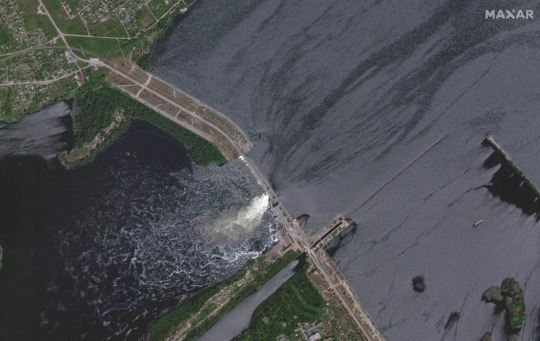
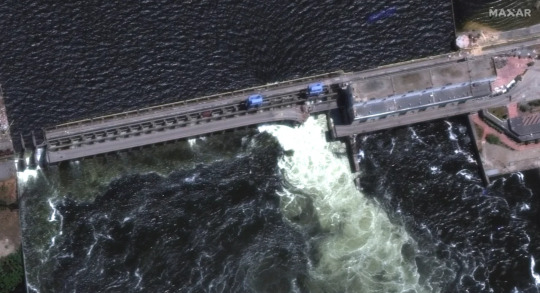
Photo: Maxar, May 28 and May 5

Photo: Energoatom, May 6
#ukraine#украина#україна#russia#россия#росія#putin#путин#путін#война#war#ecocide#ecology#flooding#river#dam#kherson#kakhovka#Херсон#Каховка#дамба#річка#река#екологія#экология#экоцид#екоцид
510 notes
·
View notes
Text
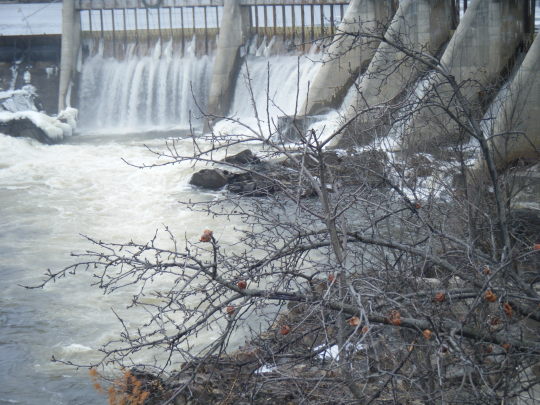
85 notes
·
View notes
Text
The more you learn about freshwater ecology, the more you will start to hate dams with the fiery passion of a thousand hateful suns
#stop fucking up streams and rivers#you're preventing migration#restricting nutrient flow#killing species#and generally making things worse#freshwater ecology#freshwater biology#ecology#dam
150 notes
·
View notes
Note
This seems like something positive to share
https://www.latimes.com/california/story/2022-07-16/endangered-salmon-relocated-to-ancestral-waters
Thank you for sharing this!
California is working on several dam-removal projects, which will allow species like winter-run Chinook salmon to access parts of the river that have been closed off to them for decades.
This will be the first time in 80 years that these salmon have been returned to the McCloud River. The first release of the salmon eggs was a joint endeavor between state and federal wildlife officials and members of the Winnemem Wintu Tribe.
"As [Caleen Sisk] carried a cupful [of salmon eggs] to the tank, she said she was 'talking to the eggs about their ancestors,' the salmon that swam there long ago. 'And just trying to give them the courage and support,' she said, 'that we’re here for them and we’re going to do the best that we can.'"
#fish conservation#indigenous conservation#river conservation#dam removal#river ecosystems#fish#salmon conservation#salmon#Winnemem Wintu#climate change#conservation#ask#anonymous#submission
2K notes
·
View notes
Text
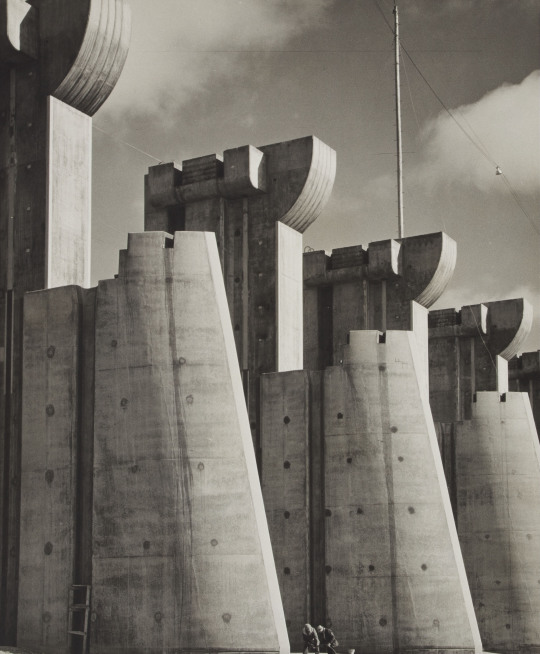
Fort Peck Dam, Montana, Margaret Bourke-White, 1936
#margaret bourke white#photography#vintage photography#vintage#black and white photography#american#female artists#women artists#montana#dam#fort peck#missouri river#1930s#1936#photojournalism#architecture
38 notes
·
View notes
Text
#good news#dams#dam removal#environmentalism#science#environment#nature#salmon#endangered#endangered species#fish#streams and rivers#puyallup river
215 notes
·
View notes
Text
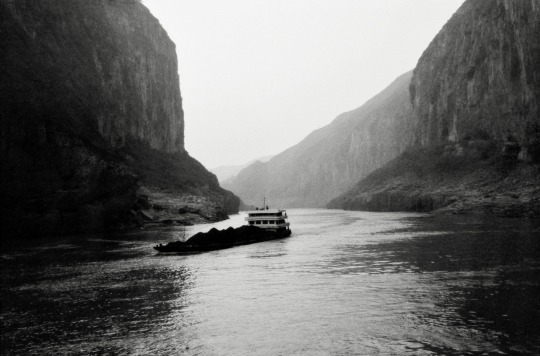
2002 China, Yangtze, Three Gorges, a year before the valley was flooded. From Yichang to Chongqing, going up the stream, the ferry had many stops. At that time, every cities along the river were destroyed by hand in a huge mass relocation of towns and villages.
#2002#china#yangtze#threegorges#dam#river#vintage#filmphotography#photography#photo#analog#photooftheday#photographylovers#documentary#ferry#flood#relocation#original photographers#blackandwhite#pierre wayser
49 notes
·
View notes
Text
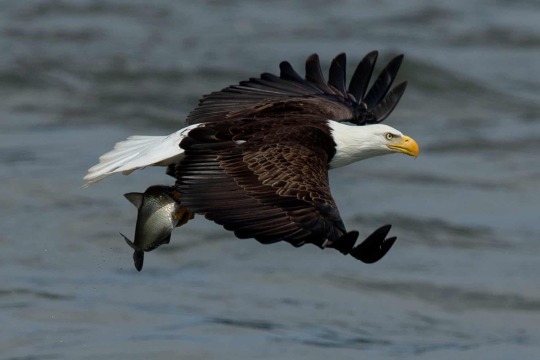
A bald eagle carries off a fish from the Susquehanna River at Conowingo Dam in Maryland, US. The increase in numbers of the bald eagle, the emblem of the United States, has been a success story for conservationists
Photograph: Michael Reynolds/EPA
#michael reynolds#photographer#epa#bald eagle#eagle#bird photography#susquehanna river#conowingo dam#maryland#united states#nature
38 notes
·
View notes
Text
"At least 239 barriers, including dams and weirs, were removed across 17 countries in Europe in 2021, in a record-breaking year for dam removals across the continent.
Spain led the way, with 108 structures taken out of the country’s rivers. “Our efforts to expand dam removals across Europe are gathering speed,” said Pao Fernández Garrido, project manager for the World Fish Migration Foundation, who helped produce Dam Removal Europe’s annual report.
“An increasing number of governments, NGOs, companies and communities are understanding the importance of halting and reversing nature loss, and buying into the fact that dam removal is a river-restoration tool that boosts biodiversity and enhances climate resilience. We’re also seeing lessons being learned from previous dam removals, new countries kickstarting removals, and new funds, including crowdfunding.”
More than 1m barriers are estimated to exist on Europe’s rivers, with many built more than a century ago. At least 150,000 are old, obsolete barriers that serve no economic purpose.
Dams, weirs and other river obstacles block fish migration routes, often leading to the loss of breeding areas and reduced numbers of species such as salmon, sturgeon, trout and eel, which affects the wider biodiversity of ecosystems, including species ranging from eagles to otters. Free-flowing rivers also transport sediments and nutrients.

Pictured: Before-and-after shots of a dam removal on a river in Parc naturel régional du Haut-Jura, France, in 2021.
“Removing dams is a real need,” said Fernández Garrido. “We have hundreds of thousands of abandoned barriers, which is a safety problem. Dams affect water quality and underground water levels, cause channel and coastal erosion and beach disappearances, generate greenhouse gas emissions and lead to declines and even extinctions of migratory fish populations, with a 93% decline of migratory fish in Europe in the last 50 years. Dams have a negative impact on the environment, so if a dam or weir isn’t strictly necessary any more, we mustn’t pass the burden to future generations.”
Dam Removal Europe is a coalition of seven organisations, including the World Fish Migration Foundation, WWF, the Rivers Trust and Rewilding Europe, working to restore healthy, free-flowing rivers across the continent. The latest report found that 76% of the removals were of small dams and weirs, but 24% were higher than 2 metres. Three countries – Portugal, Montenegro, and Slovakia – recorded their first ever dam removals in 2021. In Finland, a functioning hydropower dam was also dismantled, the first of three on the Hiitolanjoki River, which, when completed, is expected to allow landlocked salmon to return to spawning grounds.

Pictured: The Cantabrian River Basin Authority in Spain removed 50 barriers in 2021. Photograph: CRBA
“This is the perfect example to show that when an operating hydropower dam isn’t needed, and energy can be supplied by other sources, it’s worth removing it and recovering the river,” said Fernández Garrido. “The river will be totally free of dams for the first time in over 120 years.” ...
Fernández Garrido continued, “We really want to see governments from all countries taking action and creating national grants and plans to completely free some of their rivers from obstacles, so there is, at least, a free and healthy river per country. We’re talking about creating a big shift.”"
-via The Guardian (US), 5/15/22
#spain#europe#dam removal#rivers#riparian#rewilding#conservation#wilderness restoration#salmon#fish#ecosystem restoration#good news#hope
216 notes
·
View notes
Note
i wish i knew you in elementary i also had dirt wars with my classmates… peace and love
almost everyone hated me for it until i used the Weird Mud that i made from the baseball sand to patch up a massive hole in a puddle that was flooding half the yard.. then they didnt hate me but they didnt like me either :3
its so funny because one of the channels we dug was so deep that they ended up having to fill it in over the summer. but then in the fall it was not only naturally flowing again but we dug it deeper. it was like 3-4 inches deep at least & last time i checked it still flows naturally there when it rains
#whenever it wasnt raining we went and did the other dirt mines#but holy fuck when it first rained after a while it was like a holy day to us. scrape the sand and dam the rivers bitches we r making SLOP
25 notes
·
View notes
Text
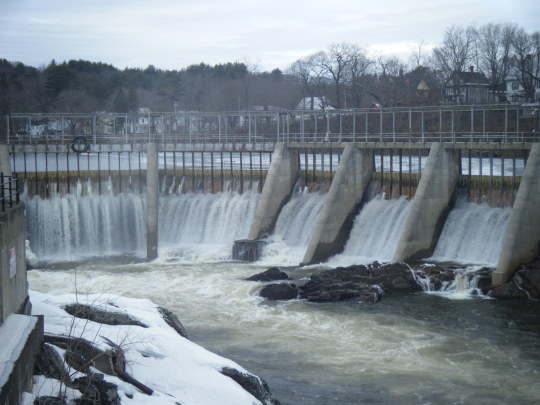
37 notes
·
View notes